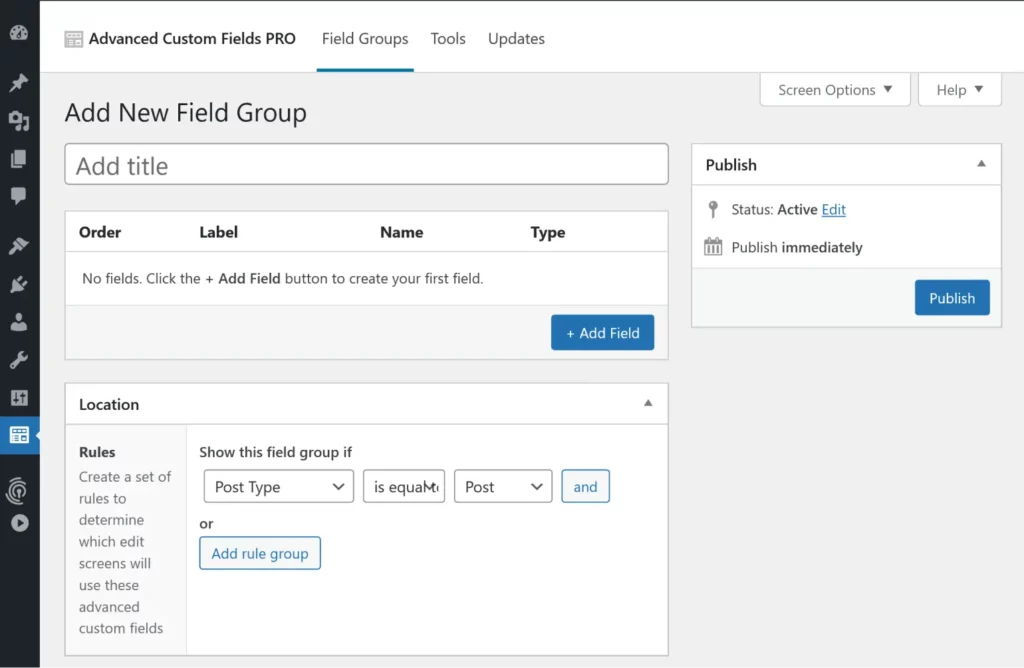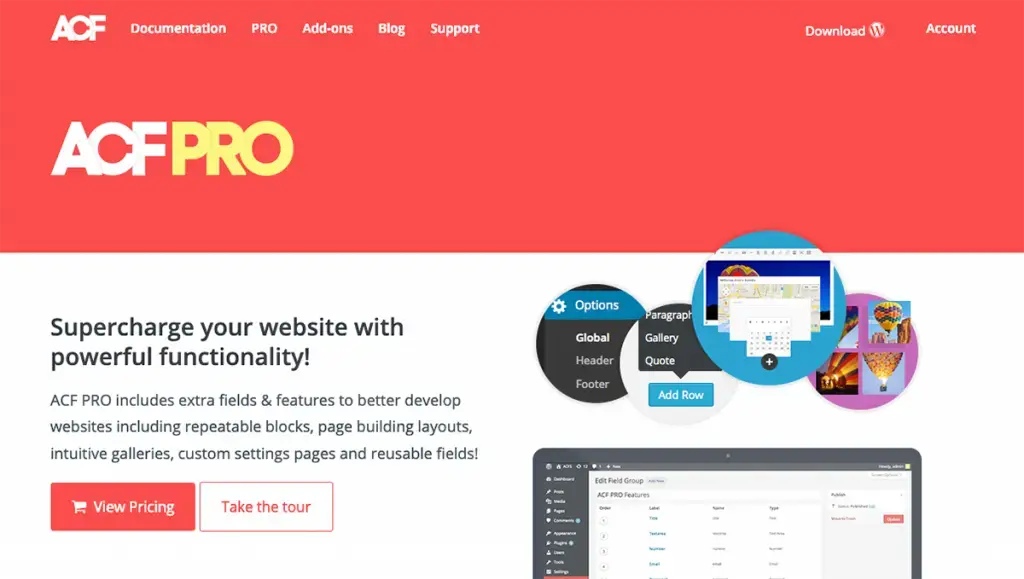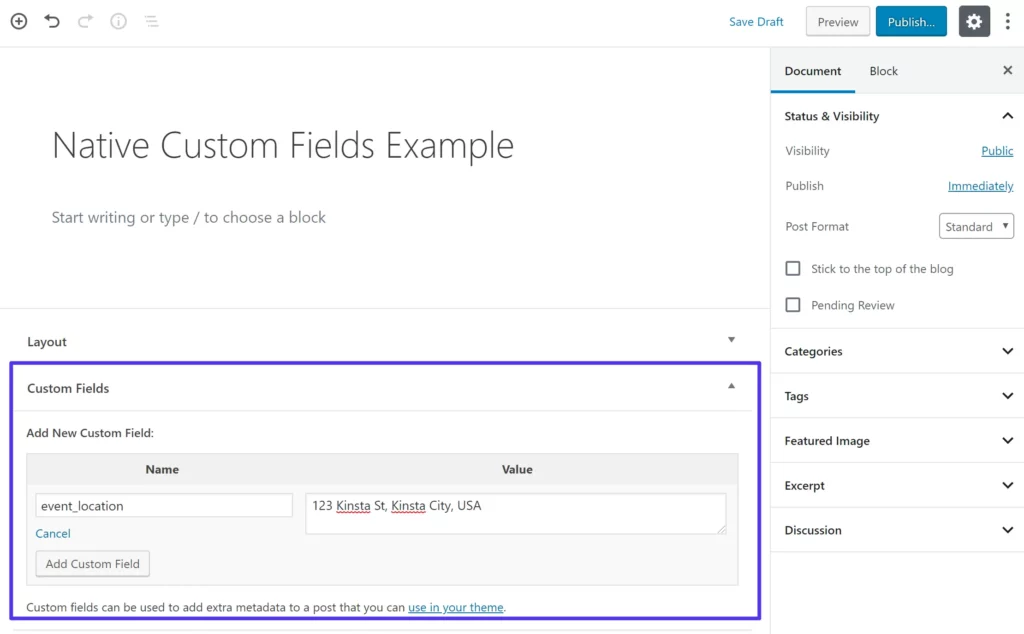In the dynamic world of website development, WordPress has established itself as a powerhouse, largely due to its flexibility and user-friendly interface. One of its most impactful features – custom post types – offers an unparalleled way to customize your site’s content beyond the boundaries set by traditional posts and pages.
Whether you’re a blogger looking to categorize your articles more effectively or a small business owner aiming to showcase diverse products or services, harnessing the potential of custom post types can transform your content strategy and enhance user engagement significantly.
How to Use WordPress Custom Post Types
Imagine being able to organize your online presence in a manner that not only elevates aesthetics but also boosts functionality, creating a seamless experience for visitors. Custom post types give you precisely this ability by allowing you to define unique content structures tailored to your specific needs. This powerful feature streamlines site management, optimizes navigation, and enhances search engine visibility—elements crucial for any successful digital strategy.

As we delve deeper into the transformative capabilities of WordPress custom post types, you'll discover how they can be aptly utilized to facilitate growth and ultimately drive conversions on your website. Prepare yourself for an insightful journey that will unlock new possibilities for your online presence!
What Are Custom Post Types?
Custom post types in WordPress are a powerful feature that expands the default content management capabilities beyond standard posts and pages. By definition, a custom post type is any content type like a post or page that you can define according to your needs, allowing for specialized content organization. This means you can create tailored structures for unique content types, such as portfolios, testimonials, event listings, or product catalogs. For instance, if you run an online store, creating a custom post type for “Products” allows you to manage your inventory separately from blog posts while maintaining a cohesive website experience.
The beauty of custom post types lies in their flexibility; they enable users to personalize how they present specific information on their websites. While standard posts typically represent time-sensitive articles and pages serve static content (like an “About Us” section), custom post types are designed for repeatable and varied formats that don’t fit neatly into either category. In contrast to posts and pages that often require similar layouts and presentation styles, custom post types permit distinct attributes and organizational frameworks tailored specifically to the desired data's context.
For example, let’s consider a travel blog. You might find it useful to create a custom post type labeled “Destinations,” allowing you to categorize each location visited with specifics like attractions, accommodations, or itineraries without cluttering your main blog feed with unrelated content. Similarly, use cases for businesses can extend to creating events where each instance has its unique details such as date, venue, and registration links. These real-world illustrations show how custom post types not only offer enhanced functionality but also ease of use in managing diverse content.
In summary, mastering custom post types allows WordPress users – from bloggers to small business owners – to strategically organize their site’s content more effectively than relying solely on posts and pages. With this innovative approach at your disposal, the potential for creating tailored experiences is endless – enabling you to engage your audience with relevant information in an intuitive manner.
Why Use Custom Post Types?
Custom post types offer a range of benefits that cater to various user groups, from businesses and bloggers to web developers. For businesses, custom post types can streamline content management by segregating different categories or line items. For instance, an e-commerce site could create custom post types for products, testimonials, and promotions. This approach simplifies data entry and enables team members to maintain respective sections without navigating through a cluttered admin panel. Bloggers, on the other hand, may employ custom post types for portfolios or recipe collections – allowing them to present their content in a more structured manner while enhancing reader engagement.
Additionally, using custom post types significantly enhances content organization and usability. In traditional WordPress setups, all content exists within default categories such as blog posts or pages. When you start employing custom post types, you bring order into your content management system (CMS).

Think about a travel blog that features destination guides, itineraries, and travel tips – creating bespoke post types for each category assures that each piece of content is easily accessible both on the administrative end and for visitors on the front end. This level of organization ensures that your audience finds relevant information quickly and that search engines index your website more efficiently.
Moreover, custom post types open avenues for better user experience (UX). With tailored layout options specific to each post type—such as a unique template for reviews versus galleries—you can present information much more clearly and attractively. A restaurant website might utilize separate custom post types for menus, events, and specials; each would come with its own design treatment suited to how users are expected to interact with this information. The improved UX not only delights visitors but also encourages longer visit durations and higher conversion rates.
Ultimately, integrating custom post types into your WordPress site means embracing innovation in content presentation. By properly categorizing pieces based on their purpose or audience appeal, you enhance navigability while fostering deeper connections with your readers. In today’s digital landscape where user attention is fleeting, making it easy for users to obtain valuable insights not only serves their needs but solidifies your brand’s reliability as well.
Leveraging Custom Post Types for SEO
When it comes to search engine optimization (SEO), structured data plays a crucial role in helping search engines understand the content and context of your site. Custom post types provide an excellent avenue to implement structured data effectively. By defining specific custom fields within these post types, you create a clear framework for search engines to follow, which can enhance how your content is displayed in search results. For instance, if you operate an online restaurant directory and utilize a custom post type for listings, incorporating structured data such as location, menu items, and reviews can significantly boost your visibility on Google.
Optimizing custom post types goes beyond merely adding structured data; it also involves tailoring the metadata associated with each type. Ensure that title tags, meta descriptions, and alt text for images are crafted specifically for each custom post type. This means using targeted keywords relevant to each type’s purpose – such as “Event Listings” for an events page or “Product Reviews” for an ecommerce site—thereby enhancing relevance to your audience's queries. Additionally, utilizing plugins like Yoast SEO or All in One SEO Pack can streamline this process by guiding users through creating optimized titles and descriptions tailored to their custom content.
Another effective strategy is implementing breadcrumbs tailored to your custom post types. Breadcrumbs not only improve user navigation but also help search engines better understand the structure of your website. By placing breadcrumbs prominently within your posts, especially where multiple custom post types interact (like a portfolio page linking to case studies), you enhance both usability and crawlability. Combining these techniques elevates your site's chances of ranking higher in organic searches while providing clear pathways for visitors.
In conclusion, leveraging WordPress custom post types for SEO isn't just about creating unique content; it's about delivering that content in a way that's coherent and easily digestible by search engines and users alike. When integrated thoughtfully with structured data techniques and best practices in metadata management, custom post types serve as a powerful tool that enhances both visibility on SERPs and overall user engagement on your site.
Creating Custom Post Types in WordPress
Creating custom post types in WordPress may sound daunting, but with the right guidance, anyone can unlock their potential. To begin, it’s essential to understand how to register a custom post type using code. This involves adding a few lines of PHP code to your theme's `functions.php` file. Start by using the `register_post_type()` function, which allows you to define various parameters such as the post type name, labels, and features like support for title, editor, and thumbnail images. For instance, if you want to create a ‘Portfolio' custom post type for showcasing your work or projects, your code would specify this new type along with specific settings tailored for portfolio entries—ensuring your content is organized effectively.
After registering your custom post type programmatically, it’s prudent to consider user-friendly alternatives if coding isn't within your comfort zone. Thankfully, several popular plugins simplify this process dramatically without sacrificing functionality. Plugins like “Custom Post Type UI” offer intuitive interfaces that allow users to create and manage custom post types through visual settings instead of coding. With just a few clicks, you can set up complex structures that cater precisely to your site's needs—be it creating an online store with product listings or a recipe archive with ingredient details.
Integrating these tools into your WordPress site will save valuable time while ensuring you're still leveraging the power of custom post types effectively. While coding offers maximum flexibility and customization possibilities for developers comfortable with PHP syntax, plugins provide an approach suitable for all skill levels. Regardless of the method chosen, crafting well-structured and purpose-driven custom post types plays a crucial role in streamlining content management on your site.
In summary, whether you decide to dive into coding or leverage intuitive plugins available on the market today, creating custom post types opens doors to enhanced site functionality and organization tailored specifically for your unique content strategy. Embrace these approaches as part of your WordPress toolkit and witness how they enrich both user experience and engagement across your website.
Adding Custom Fields to Enhance Content
Custom fields are a powerful feature in WordPress that allow you to add additional, structured information to your custom post types. By utilizing these fields, you can go beyond standard content and provide more detailed insights tailored to your audience's needs.
For instance, if you're running a real estate website as a custom post type, you might want to include fields for property size, location coordinates, or the number of bedrooms – all vital data points that enhance the user's understanding of each listing. This added layer of customization not only improves user experience but also boosts engagement by making it easier for your visitors to find relevant information quickly.
Integrating custom fields into your WordPress site is quite simple. Once you've registered your custom post type, you can create custom fields using either code or plugins designed specifically for this purpose. While coding affords great flexibility and control, many users prefer a no-code solution due to its ease of use and time efficiency. Plugins such as Advanced Custom Fields (ACF) and Pods Framework stand out in this landscape. With ACF, for example, you can easily create and manage multiple field types like text boxes, images, checkboxes, and even complex relationship fields without diving deep into PHP coding.

Another popular plugin is Meta Box which offers a lightweight framework that's both intuitive and developer-friendly. This tool allows you to build sophisticated meta box interfaces in seconds while remaining customizable enough for advanced users who appreciate having programming options at their fingertips. These plugins not only simplify the process of adding custom fields but also significantly enhance backend collaboration among team members working on various content elements.
In conclusion, leveraging custom fields in conjunction with custom post types unlocks an impressive level of content organization and interaction potential on your WordPress site. Whether you're an enthusiastic blogger or a small business owner looking to stand out online, these features allow you to cater your content dynamically while providing valuable context that resonates with your target audience—ultimately enhancing both accessibility and appeal.
Displaying Custom Post Types on Your Website
Once you've successfully created custom post types and added custom fields, the next essential step is displaying them effectively on your website. The beauty of WordPress lies in its flexibility, allowing developers to query and showcase various post types in countless ways. For instance, if you’ve set up a custom post type for “Events,” you might want to create a dedicated page that lists upcoming events or display them prominently on your homepage. To accomplish this, utilize the WP_Query class or built-in functions like get_posts() to retrieve and loop through your custom posts seamlessly.
When it comes to styling your custom post type displays, aesthetics play a crucial role in enhancing user experience. Choose layouts that complement the nature of your content; for example, displaying recipe cards for a “Recipes” custom post type can dramatically improve engagement. Use CSS and theme templates creatively to ensure these posts stand out without detracting from overall site design. Consider using grid layouts or carousels—both are visually appealing methods to present multiple entries together while conserving space.
Additionally, remember that ensuring responsive design is vital when displaying custom posts on different devices. Don’t forget about accessibility; always use appropriate headings and alt text for images so every user has a smooth experience accessing your content. Being mindful of mobile users will help cater to diverse audiences while making sure everyone benefits from the rich information provided by your custom post types.
Lastly, consider implementing pagination if you're showcasing numerous entries. This functionality prevents overwhelming visitors with too much content at once while encouraging them to explore further into your site’s offerings. By applying these techniques thoughtfully, you'll transform how your audience interacts with your content and leverage the full utility of WordPress’s powerful capabilities in presenting unique data forms tailored specifically for your needs.
Real-World Use Cases for Custom Post Types
Custom post types have proven invaluable across various industries, unlocking new ways to engage audiences and streamline content management. For instance, an online recipe platform may utilize custom post types to create a “Recipes” section separate from standard blog posts. This allows users to easily submit their culinary creations, complete with specific fields for ingredients, cooking time, and serving size. By employing custom templates tailored to recipes, the platform enhances user experience while allowing for rich media such as videos and step-by-step photos that can elevate engagement levels dramatically.

In the realm of real estate, agencies often implement a custom post type called “Properties,” which enables them to display listings more effectively than regular posts would allow. Each property can be detailed individually with bespoke fields for price, location, number of bedrooms, and even virtual tours. This organization not only aids potential buyers in finding their ideal home but also enriches SEO efforts as each listing is structured carefully for better indexing by search engines—thus drawing in more qualified leads.
Case studies from educational institutions distinguish another powerful use case. Universities frequently harness custom post types for handling diverse content like courses offered or faculty bios. By creating these specialized sections, prospective students can filter through course offerings based on subjects or departments easily. Faculty members might have profiles with fields extending beyond standard information — such as research interests or publications — which adds depth and showcases the institution's expertise effectively.
These examples illustrate how adopting custom post types enables organizations to tailor their digital platforms to serve specific audience needs better while optimizing usability and enhancing engagement metrics. As companies continue exploring innovative ways to interact with customers through personalized content experiences, mastering the implementation of WordPress custom post types will remain crucial in meeting those evolving demands.
Common Mistakes to Avoid In WordPress Custom Post Types
When delving into the world of WordPress Custom Post Types (CPTs), even seasoned users can fall prey to common pitfalls that may hinder their website's performance and usability. One prevalent mistake is failing to properly define the labels and features of a custom post type. Many users overlook the importance of configuring user-friendly names and descriptions, which can lead to confusion among site administrators or editors.
- For instance, if a custom post type for “Events” is labeled simply as “Customevent,” it provides little context about its purpose, potentially leading team members to overlook or misuse the feature. To create clarity, ensure your custom post types have clear, descriptive labels that reflect their intended use.
Another frequent oversight involves neglecting the integration of taxonomies with CPTs. Users often forget that extending categories and tags designed for standard posts can enhance content organization significantly. Without these taxonomies, content may become disjointed, making it challenging for visitors—and search engines—to navigate through related information.
- For example, an online recipe blog could easily blend ”Dessert Recipes” as a custom post type under multiple categories such as “Vegan” or “Holiday Specials.” Properly categorizing posts not only cultivates an organized structure but also improves searchability within your site.
It's also crucial to consider the impact on performance when creating numerous custom post types without proper foresight. Overloading your site with too many CPTs can result in slower loading times and complicate backend management. Best practices dictate that you should limit custom post types to what is truly necessary while ensuring they cater well to your site's needs; if you have three different types for video formats alone without a significant volume of content, it may be wise to consolidate them into one comprehensive CPT instead.
In conclusion, by actively avoiding these common mistakes—defining effective labels, leveraging taxonomies for better structure, and maintaining judicious use of CPTs—you promote seamless implementation and user experience on your WordPress website. Emphasizing best practices right from the outset ensures a smoother path toward maximizing the advantages that custom post types offer.
Wrapping Up
WordPress custom post types are a powerful feature that enables users to go beyond the traditional limitations of standard posts and pages. By harnessing the potential of custom post types, you can tailor your website's structure to better serve your content needs. For instance, a restaurant owner can create a custom post type for menus that not only organizes their offerings but also allows them to add specific fields like ingredient details and pricing. This level of customization translates into enhanced user experiences, allowing visitors to easily find the information they seek while reinforcing brand identity.
Whether you're a small business owner, blogger, or web developer, exploring the myriad possibilities presented by custom post types can substantially elevate your website's functionality and usability. Not only do these features help in organizing content more effectively, but they also enhance engagement by presenting material in ways that align with user expectations.
Imagine having an online portfolio where each project is represented by a unique custom post type complete with detailed descriptions, client testimonials, and vibrant galleries – invoking interest and drawing users deeper into what you have to offer.
As you embark on this journey of customization with WordPress, remember that experimentation is key. Don't shy away from trying different combinations of post types tailored specifically for your audience’s preferences or industry trends. Now is the perfect time to dive into creating and implementing these tailored solutions; it could lead not only to improved efficiency in managing content but also pave the way for greater visibility in search engines when properly optimized.
Ultimately, embracing WordPress custom post types unleashes endless possibilities for both personal expression and professional capabilities. Take advantage of this powerful tool today; start designing your content strategy around custom post types that resonate with your audience and watch as your website transforms into an engaging digital experience!
Frequently Asked Questions
1. What are custom post types in WordPress?
Custom post types are specialized content types that go beyond standard posts and pages. They allow users to create a diverse range of content structures (e.g., portfolios, testimonials) tailored specifically to their website's requirements.
2. How do I create a custom post type?
You can create custom post types either programmatically using code with the `register_post_type` function or by utilizing plugins like Custom Post Type UI that simplify the process without needing technical expertise.
3. Can I add custom fields to my custom post types?
Yes! Custom fields can be added using plugins such as Advanced Custom Fields or CMB2 to enhance content by allowing the addition of additional metadata relevant to your specific use case.
4. Are there any SEO benefits to using custom post types?
Absolutely! Custom post types enable better organization of content which enhances search engine visibility if structured appropriately with rich snippets and organized data.
5. What common mistakes should I avoid with custom post types?
Common pitfalls include over-complicating structure without clear purpose, neglecting user experience during design implementations, and overlooking SEO optimization techniques when displaying these new content formats. Following best practices minimizes issues and ensures smoother implementation.
By embracing the capabilities offered through WordPress custom post types and addressing common questions effectively, you're setting yourself up for success in creating websites that maximize engagement while meeting specific audience demands. It's time to explore these features—your next level of effectiveness awaits!
Unlocking the Full Potential of WordPress Custom Post Types
WordPress custom post types present a dynamic and powerful way to enhance your website's functionality by allowing you to tailor content structures that meet your unique needs. By implementing custom post types, you can significantly improve content organization, SEO, and user experience for various audiences – be it bloggers, small business owners, or digital marketers.
The potential for creative expression and effective communication through this feature is immense; striving to understand and exploit these tools will put you at the forefront of web innovation.










How to use WordPress custom post types for better organization? Learn how to streamline your content management and boost user engagement today!